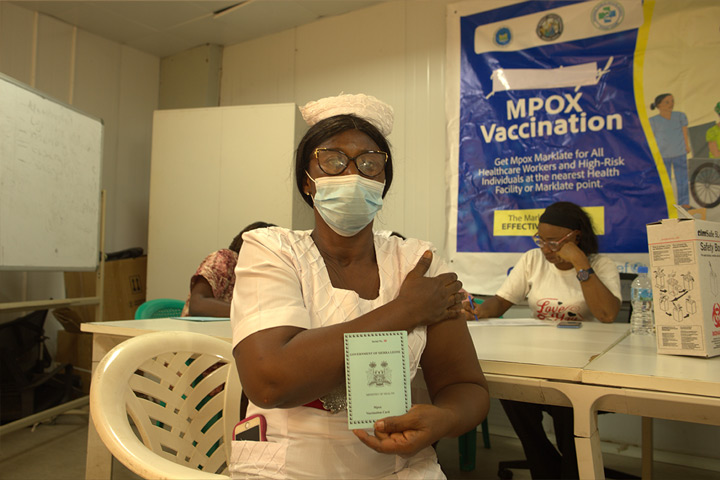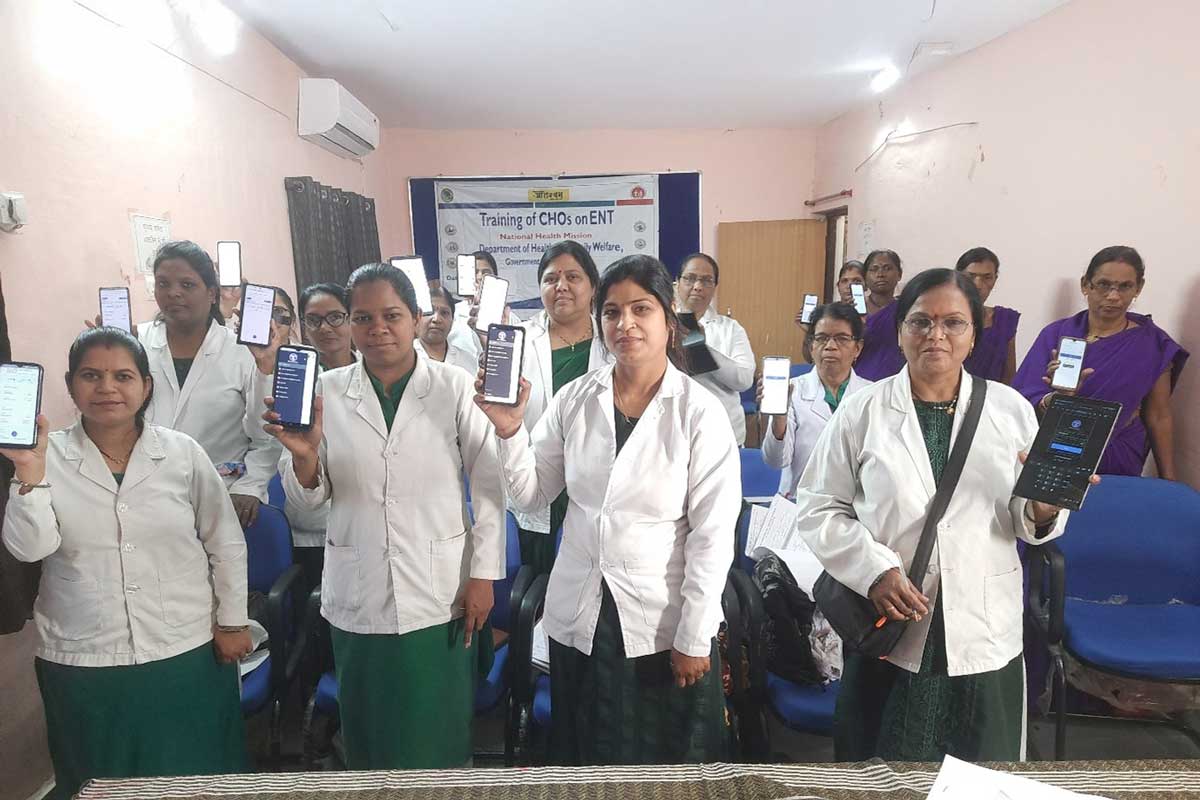The women who made modern vaccines work
- 8 March 2018
- 4 min read

Have you heard of Edward Jenner, the inventor of the modern vaccine? Or Jonas Salk, whose polio vaccine was a turning point in the fight against this debilitating disease? If you know something about global health, you’ve probably heard of these vaccine pioneers. But what about the women who also helped lay the foundations for modern immunisation? Meet five remarkable women who pushed forward the frontiers of science.
Lady Mary Wortley Montagu
Lady Mary Wortley Montagu defied convention by introducing smallpox inoculation into Western medicine. While visiting the Ottoman Empire, she leant about Turkish customs and witnessed the practice of inoculation against smallpox. Lady Mary was eager to spare her children the suffering of smallpox, so in 1718 she had her son Edward inoculated. On her return to London, she promoted the procedure, despite resistance from the medical establishment.
Image via Britannica.

Lady Mary Wortley Montagu defied convention by introducing smallpox inoculation into Western medicine. While visiting the Ottoman Empire, she leant about Turkish customs and witnessed the practice of inoculation against smallpox. Lady Mary was eager to spare her children the suffering of smallpox, so in 1718 she had her son Edward inoculated. On her return to London, she promoted the procedure, despite resistance from the medical establishment.
Image via Britannica.
Dr Anna Wessels Williams (1863–1954)
Her isolation of a strain of diphtheria in 1894 was used to develop the first diphtheria anti-toxin and later a diphtheria vaccine. She was also the first woman to be elected chair of the laboratory section of the American Public Health Association.
Many years later, diphtheria is now completely preventable, and children around the world are protected from it through the combined diphtheria, tetanus and pertussis (DTP) vaccines.
Photo via NIH.

Her isolation of a strain of diphtheria in 1894 was used to develop the first diphtheria anti-toxin and later a diphtheria vaccine. She was also the first woman to be elected chair of the laboratory section of the American Public Health Association.
Many years later, diphtheria is now completely preventable, and children around the world are protected from it through the combined diphtheria, tetanus and pertussis (DTP) vaccines.
Photo via NIH.
Drs Pearl Kendrick (1890-1980) & Grace Eldering (1900-1988)
Working with a limited budget, Eldering and Kendrick researched pertussis (whooping cough), tested their vaccine first on themselves, and then ran a successful clinical trial. This resulted in the first vaccine against the disease being introduced in America in the 1940s.
Following the development of the pertussis vaccine, they combined it with two other vaccines (diphtheria and tetanus) into a single shot – DTP vaccine.

Working with a limited budget, Eldering and Kendrick researched pertussis (whooping cough), tested their vaccine first on themselves, and then ran a successful clinical trial. This resulted in the first vaccine against the disease being introduced in America in the 1940s.
Following the development of the pertussis vaccine, they combined it with two other vaccines (diphtheria and tetanus) into a single shot – DTP vaccine.
Dr Margaret Pittman (1901-1995)
Among her many achievements, Pittman is known for her research into the Haemophilus influenzae bacterium. She identified six types of Heamophilus influenzae, labelling them “a” to “f”. Type b (Hib) is the most harmful, causing meningitis and other serious infections. Her work led to the development of vaccines that protect against Hib.
She was also the first woman to lead a National Institutes of Health Laboratory in the US.

Among her many achievements, Pittman is known for her research into the Haemophilus influenzae bacterium. She identified six types of Heamophilus influenzae, labelling them “a” to “f”. Type b (Hib) is the most harmful, causing meningitis and other serious infections. Her work led to the development of vaccines that protect against Hib.
She was also the first woman to lead a National Institutes of Health Laboratory in the US.
Dr Isabel Morgan (1911-1996)
Throughout the 1940s Morgan worked with a team of virologists at Johns Hopkins University in the USA, advancing understanding of polio viruses. She and her team were the first to prove that an inactive or “killed” virus could produce immunity in monkeys, overturning the previous belief that only live viruses could do so.
Her work fed directly into the development of Jonas Salk’s vaccine against polio in 1955. She is also the only woman on the 17 person polio “wall of fame”.
Photo via Wikipedia.

Throughout the 1940s Morgan worked with a team of virologists at Johns Hopkins University in the USA, advancing understanding of polio viruses. She and her team were the first to prove that an inactive or “killed” virus could produce immunity in monkeys, overturning the previous belief that only live viruses could do so.
Her work fed directly into the development of Jonas Salk’s vaccine against polio in 1955. She is also the only woman on the 17 person polio “wall of fame”.
Photo via Wikipedia.
Dr Dorothy Horstmann (1911-2001)
Dr. Horstmann was an epidemiologist and virologist who showed that poliovirus reaches the brain through the blood. Her discovery enabled the development of a vaccine. She also became the first woman to be appointed a professor at the Yale School of Medicine.
Thanks to vaccines, polio has almost been eradicated, with cases down by more than 99% since 1988. International organisations like Rotary, Gavi and Global Polio Eradication Initiative are now helping countries finish the job with inactivated polio vaccine.
Photo via polioplace.org.

Dr. Horstmann was an epidemiologist and virologist who showed that poliovirus reaches the brain through the blood. Her discovery enabled the development of a vaccine. She also became the first woman to be appointed a professor at the Yale School of Medicine.
Thanks to vaccines, polio has almost been eradicated, with cases down by more than 99% since 1988. International organisations like Rotary, Gavi and Global Polio Eradication Initiative are now helping countries finish the job with inactivated polio vaccine.
Photo via polioplace.org.
Dr Anne Szarewski (1959-2014)
In the 1990s, Dr Szarewski and her colleagues showed that human papillomavirus (HPV) was linked to cervical cancer. It was a breakthrough that, over the ten years that followed, allowed a vaccine to be developed to prevent HPV and with it the majority of cervical cancers. Those vaccines are now becoming more and more available around the world, preventing suffering and death, and even offering up the possibility that cervical cancer could be eliminated.
Photo via Cancer Research UK.

In the 1990s, Dr Szarewski and her colleagues showed that human papillomavirus (HPV) was linked to cervical cancer. It was a breakthrough that, over the ten years that followed, allowed a vaccine to be developed to prevent HPV and with it the majority of cervical cancers. Those vaccines are now becoming more and more available around the world, preventing suffering and death, and even offering up the possibility that cervical cancer could be eliminated.
Photo via Cancer Research UK.
Dr Rachel Schneerson (1932-)
Dr. Scheerson and her colleagues created the first vaccine against Haemophilus influenza b (Hib), a cause of pneumonia and meningitis, licensed in 1989. It was the first “conjugate” vaccine, an innovative design that allowed to safely protect young children.
Hib protection is now available as part of the 5-in-1 vaccine in all the world’s 73 poorest countries. It’s estimated that this availability will help Hib vaccine save 7 million lives by 2020.
Photo: Lasker Foundation.

Dr. Scheerson and her colleagues created the first vaccine against Haemophilus influenza b (Hib), a cause of pneumonia and meningitis, licensed in 1989. It was the first “conjugate” vaccine, an innovative design that allowed to safely protect young children.
Hib protection is now available as part of the 5-in-1 vaccine in all the world’s 73 poorest countries. It’s estimated that this availability will help Hib vaccine save 7 million lives by 2020.
Photo: Lasker Foundation.
Dr Ruth Bishop (1933-)
In 1973, Bishop led a team of researchers that discovered rotavirus, a major cause of severe diarrhoea in children around the world. The discovery, which Bishop attributes to a “mixture of calculated research and serendipity”, has had an enormous impact.
The identification of an infectious cause of deadly diarrhoea kick-started the successful 30-year hunt for a vaccine against it. Today, the vaccines are slowly reaching children in lower income countries, but rotavirus still accounts for an estimated 200,000 deaths per year.
Photo via Science In Public Aus.

In 1973, Bishop led a team of researchers that discovered rotavirus, a major cause of severe diarrhoea in children around the world. The discovery, which Bishop attributes to a “mixture of calculated research and serendipity”, has had an enormous impact.
The identification of an infectious cause of deadly diarrhoea kick-started the successful 30-year hunt for a vaccine against it. Today, the vaccines are slowly reaching children in lower income countries, but rotavirus still accounts for an estimated 200,000 deaths per year.
Photo via Science In Public Aus.










